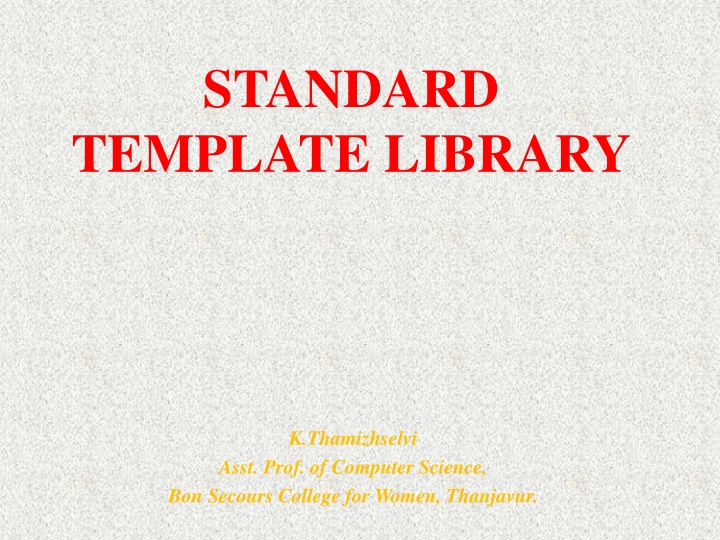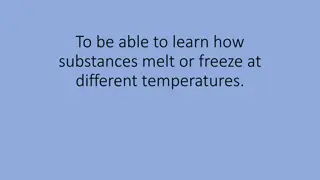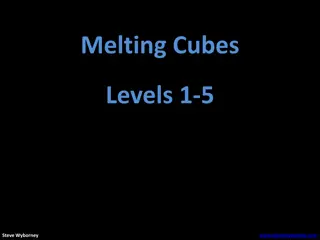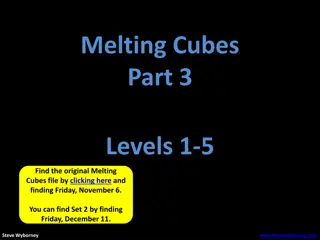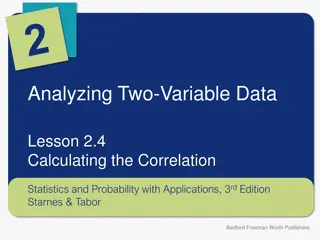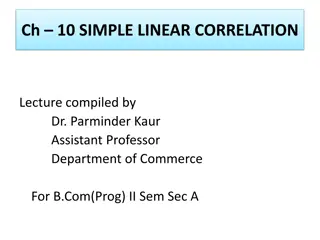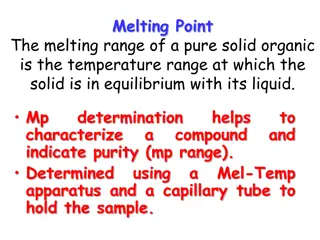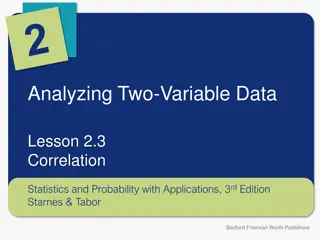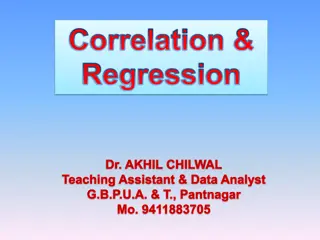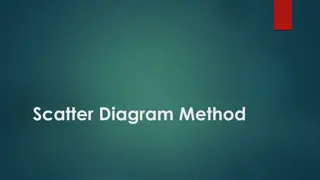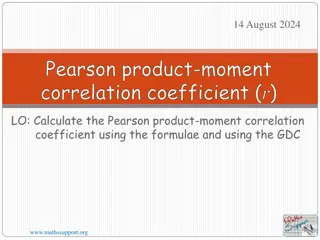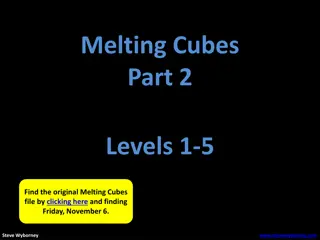Correlation Analysis of Glacier Melting Trends
Rapid glacial melt trends from the 20th to the 21st century are analyzed using glaciological and geodetic methods on reference glaciers like Gries, Echaurren Norte, Midtre Lovrebreen, and Devon Ice Cap. The study explores the mass balance changes of glaciers and their implications on climate change.
Download Presentation

Please find below an Image/Link to download the presentation.
The content on the website is provided AS IS for your information and personal use only. It may not be sold, licensed, or shared on other websites without obtaining consent from the author.If you encounter any issues during the download, it is possible that the publisher has removed the file from their server.
You are allowed to download the files provided on this website for personal or commercial use, subject to the condition that they are used lawfully. All files are the property of their respective owners.
The content on the website is provided AS IS for your information and personal use only. It may not be sold, licensed, or shared on other websites without obtaining consent from the author.
E N D
Presentation Transcript
STANDARD TEMPLATE LIBRARY K.Thamizhselvi Asst. Prof. of Computer Science, Bon Secours College for Women, Thanjavur.
Standard Template Library The collection o generic classes and functions is called the Standard Template Library (STL). STL components are defined in the namespace std. to inform the compiler to use standard C++ library. Directive using namespace std;
Benefits of STL Using STL we can save time and effort Leads to high quality programs Well- written and well-tested components are defined in STL.
Components of STL Three key components Containers Algorithms Iterators
Relationship between Three STL Components Container Algorithm 1 Algorithm 2 Iterator 1 Iterator 2 Object 1 Object 2 Object 3 Iterator 3 Algorithm 3
These 3 components work in conjunction with one another to provide support to a variety of programming solutions. Algorithms employ iterators to perform operations stored in containers. A container is an object that actually stores data. It is a way data is organized in memory. Containers are implemented by template classes. An algorithm is a procedure that is used to process the data contained in the containers. They are implemented by template functions. An iterator is an object that points to an element in a container. It connect algorithms with containers and play a key role in manipulation of data stored in the containers.
CONTAINERS Containers are the objects that hold data of same type. Each container class defines a set of functions that can be used to manipulate its contents.
Types of Containers Containers Sequence Containers Derived Containers vector Associative Containers Priority _queue deque stack list queue multimap set multiset map
Sequence Containers Stores elements in a linear sequence. Element 0 Element 1 . 3 types of sequence container: Vector List Deque Vector container defines functions for inserting elements, erasing the contents and swapping the contents of two vectors. Elements in all these containers can be accessed by an iterators. Last element
Associative Containers Designed to support direct access to elements using keys. 4 types Set Multiset Map Multimap All these containers store data in a structure Tree
Set & Multiset can store no. of items and provide operations for manipulating them using the values as the keys. Mutiset allows duplicate items Set does not allows. Map & Multimap are used to store pair of items, one is key and another is value. Map allows only one key to store. Multimap permits multiple keys.
DERIVED CONTAINERS 3 Types: Stack Queue Priority_queue These are also called container adaptors. It does not support iterators. It cannot be used for data manipulation. To implement deleting and inserting pop() & push() operations are used.
ALGORITHMS Used to work with two different types of containers at the same time. STL Algorithms are standalone template function. <algorithm> must be included to access the STL algorithm. STL provides more than 60 algorithms to support complex operations.
ITERATORS Used to access containers elements. The process of traversing from one element to another iterating . Types: Input Output Forward Bidirectional Random
Input & Output iterators support the least functions and they can be used only to traverse in a container. The forward supports all operations of input & output and also retains its position in containers. A bidirectional iterator while support all forward iterator operations, provide the ability to move in the backward direction. A random access iterator combine the functionality of bidirectional iterators with an ability to jump to an arbitrary location.
